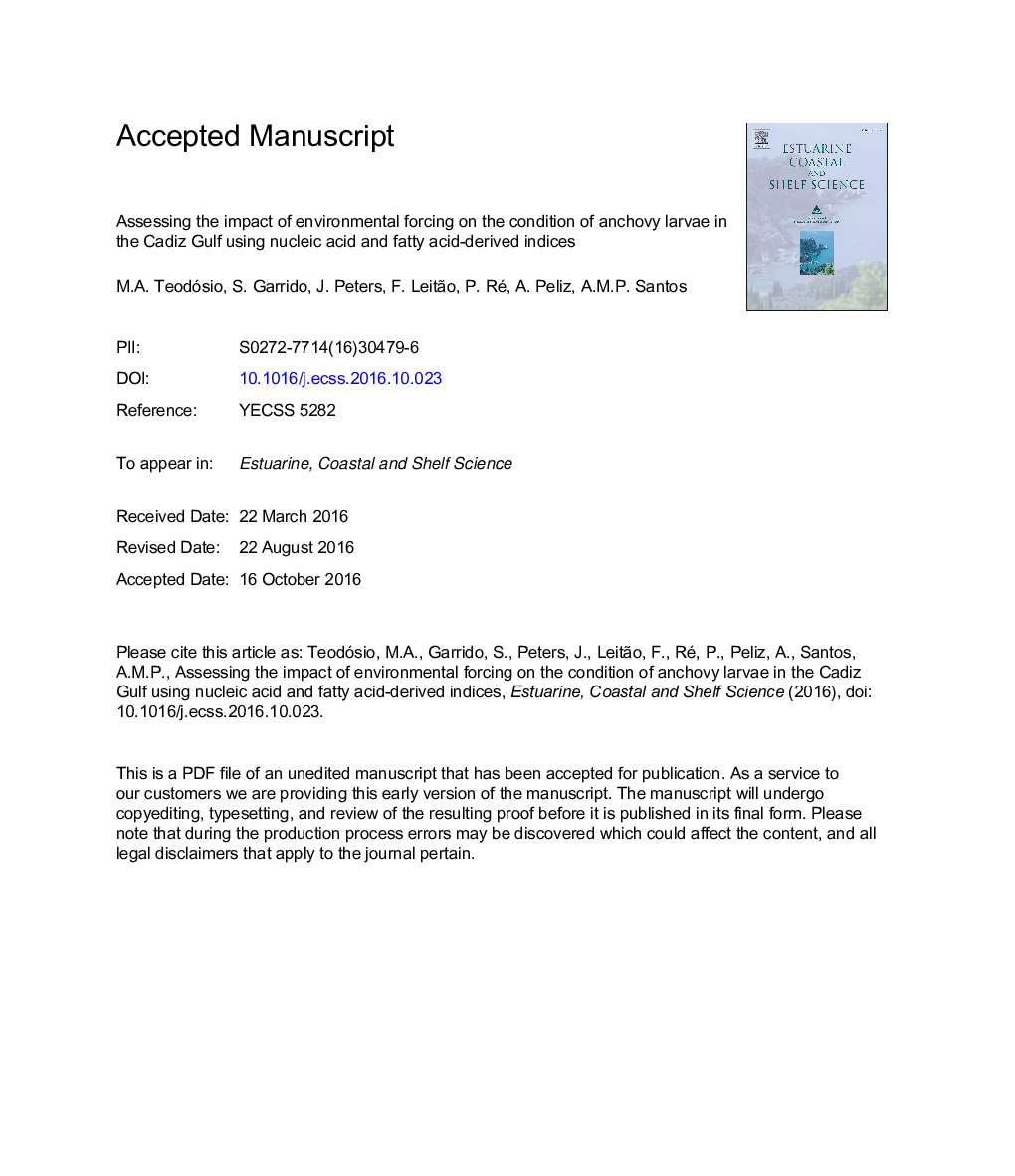| کد مقاله | کد نشریه | سال انتشار | مقاله انگلیسی | نسخه تمام متن |
|---|---|---|---|---|
| 5765282 | 1626616 | 2017 | 45 صفحه PDF | دانلود رایگان |
عنوان انگلیسی مقاله ISI
Assessing the impact of environmental forcing on the condition of anchovy larvae in the Cadiz Gulf using nucleic acid and fatty acid-derived indices
دانلود مقاله + سفارش ترجمه
دانلود مقاله ISI انگلیسی
رایگان برای ایرانیان
کلمات کلیدی
موضوعات مرتبط
مهندسی و علوم پایه
علوم زمین و سیارات
زمین شناسی
پیش نمایش صفحه اول مقاله

چکیده انگلیسی
Understanding the environmental processes affecting fish larvae survival is critical for population dynamics, conservation purposes and to ecosystem-based fishery management. Using anchovies (Engraulis encrasicolus) of the Cadiz Gulf as a study case and considering the “Ocean Triad” hypothesis, we investigate the larval ecophysiological status and potential survival in relation to oceanographic variables. Therefore, this study aims to describe the nutritional condition of anchovy larvae during spawning season (peak in summer) through nucleic acid- and fatty acid (FA)-derived indices and to analyze the effects of the major environmental parameters (Depth, Temperature, Salinity, Plankton biomass) on anchovy survival potential at early phases. Fish larvae were collected in August from 30 m to 400 m depth at 35 stations off the southern Iberian coast. A previous upwelling event influenced the oceanographic conditions of the more western stations off Cape São Vicente (CSV). Along the coast, the water became warmer from west to the east through Cape Santa Maria (CSM) ending at Guadiana estuary, where easterly winds originated the development of a counter current. The standardized RNA/DNA (sRD) of anchovy larvae decreased throughout larval ontogeny, reflecting a reduction of growth during the development. Essential FA concentrations also decreased, but docosahexaenoic acid (DHA) in particular was highly conserved even after the reduction of total FA concentration in anchovy larvae related to the onset of swimming abilities (post-flexion phase). The oceanographic conditions (west upwelling, east counter current, and stratification) led to a nearshore aggregation of plankton and anchovy larvae with good ecophysiological conditions in the central area of the southern coast, where an optimal range of temperature and chlorophyll, as an indirect food proxy for anchovy larval development, were registered. The study proves that the oceanographic conditions of the study area are putative drivers of the ecophysiological condition of anchovy larvae to guarantee potential survival, supporting the “Ocean Triad” hypothesis with major repercussions for recruitment and population dynamics.
ناشر
Database: Elsevier - ScienceDirect (ساینس دایرکت)
Journal: Estuarine, Coastal and Shelf Science - Volume 185, 5 February 2017, Pages 94-106
Journal: Estuarine, Coastal and Shelf Science - Volume 185, 5 February 2017, Pages 94-106
نویسندگان
M.A. Teodósio, S. Garrido, J. Peters, F. Leitão, P. Ré, A. Peliz, A.M.P. Santos,